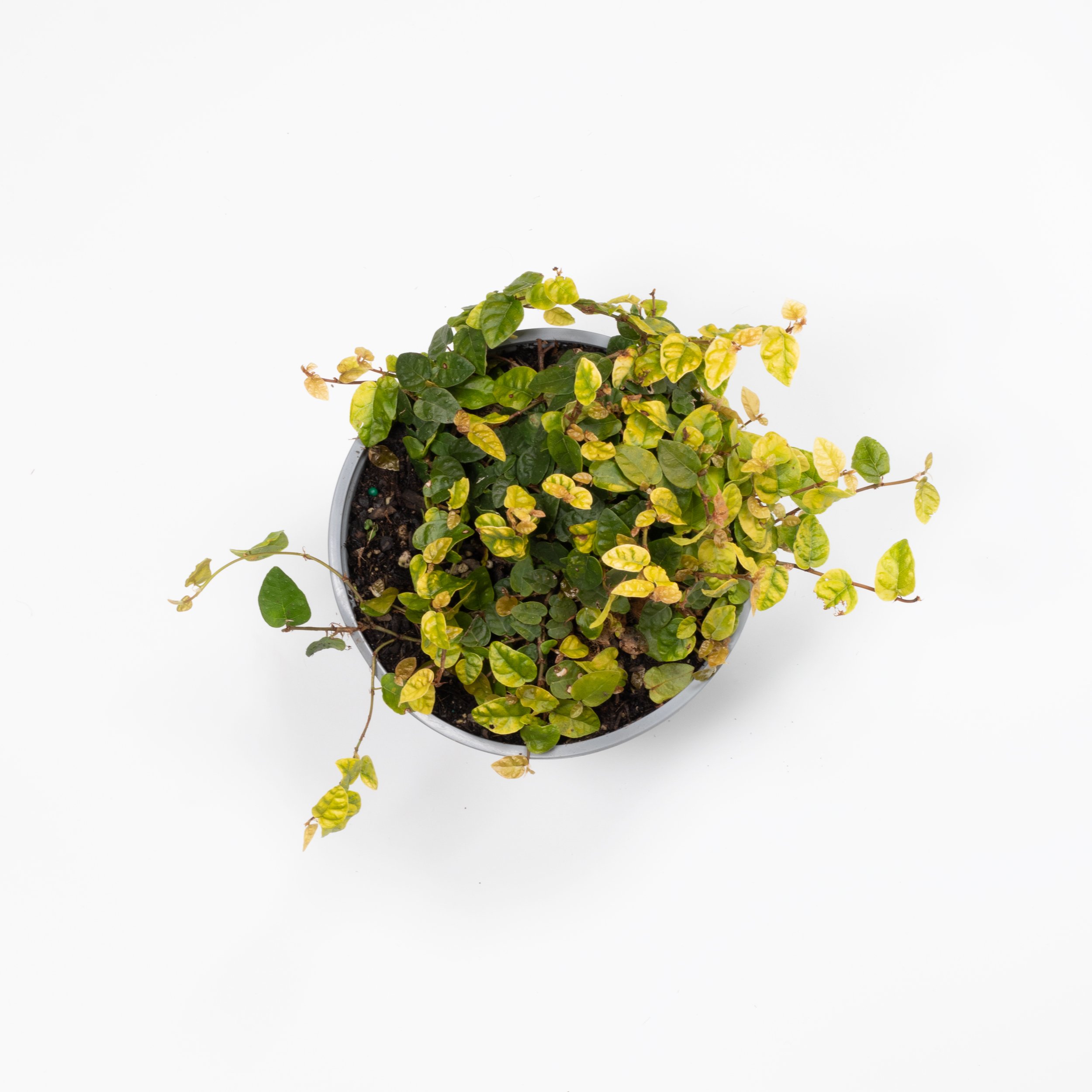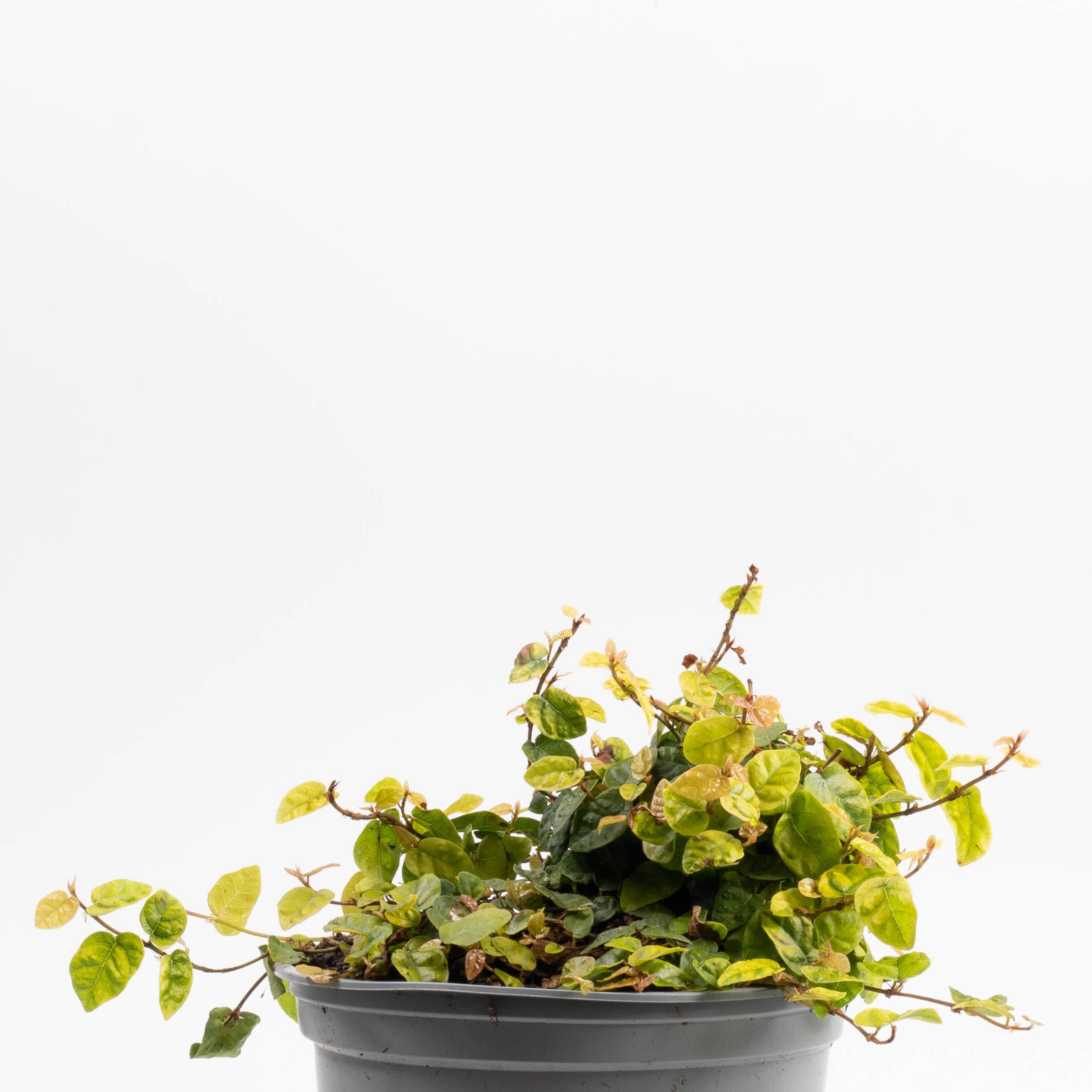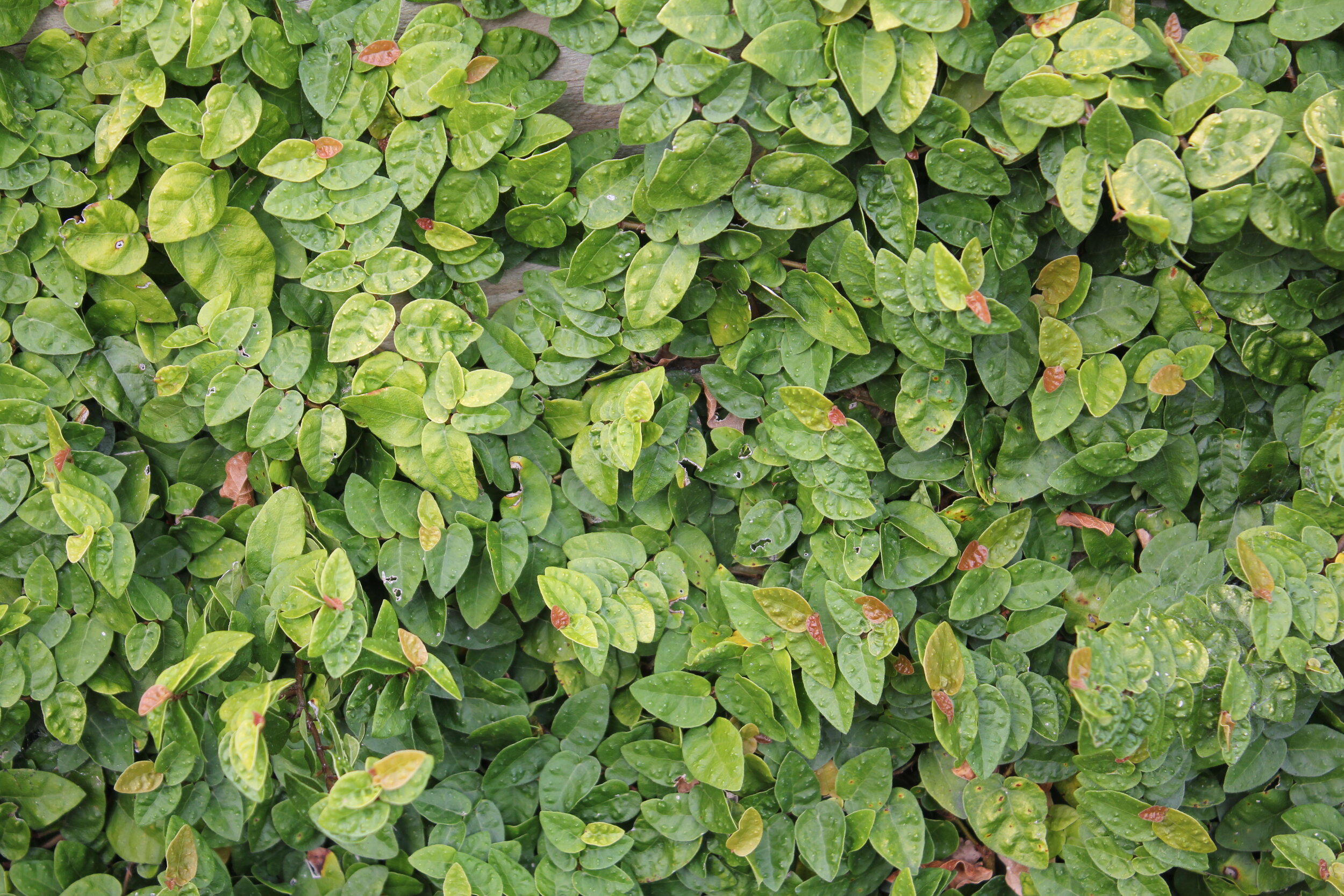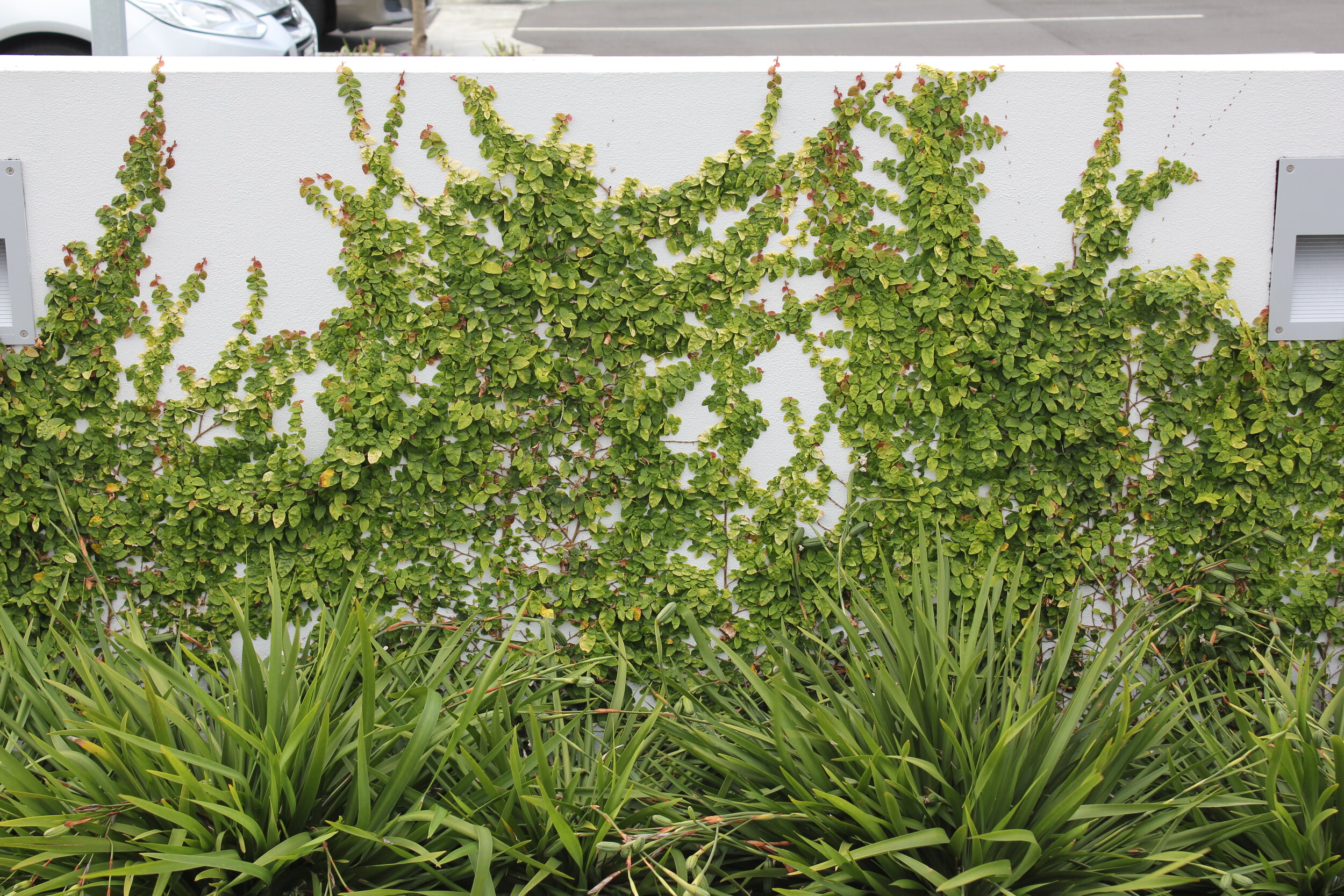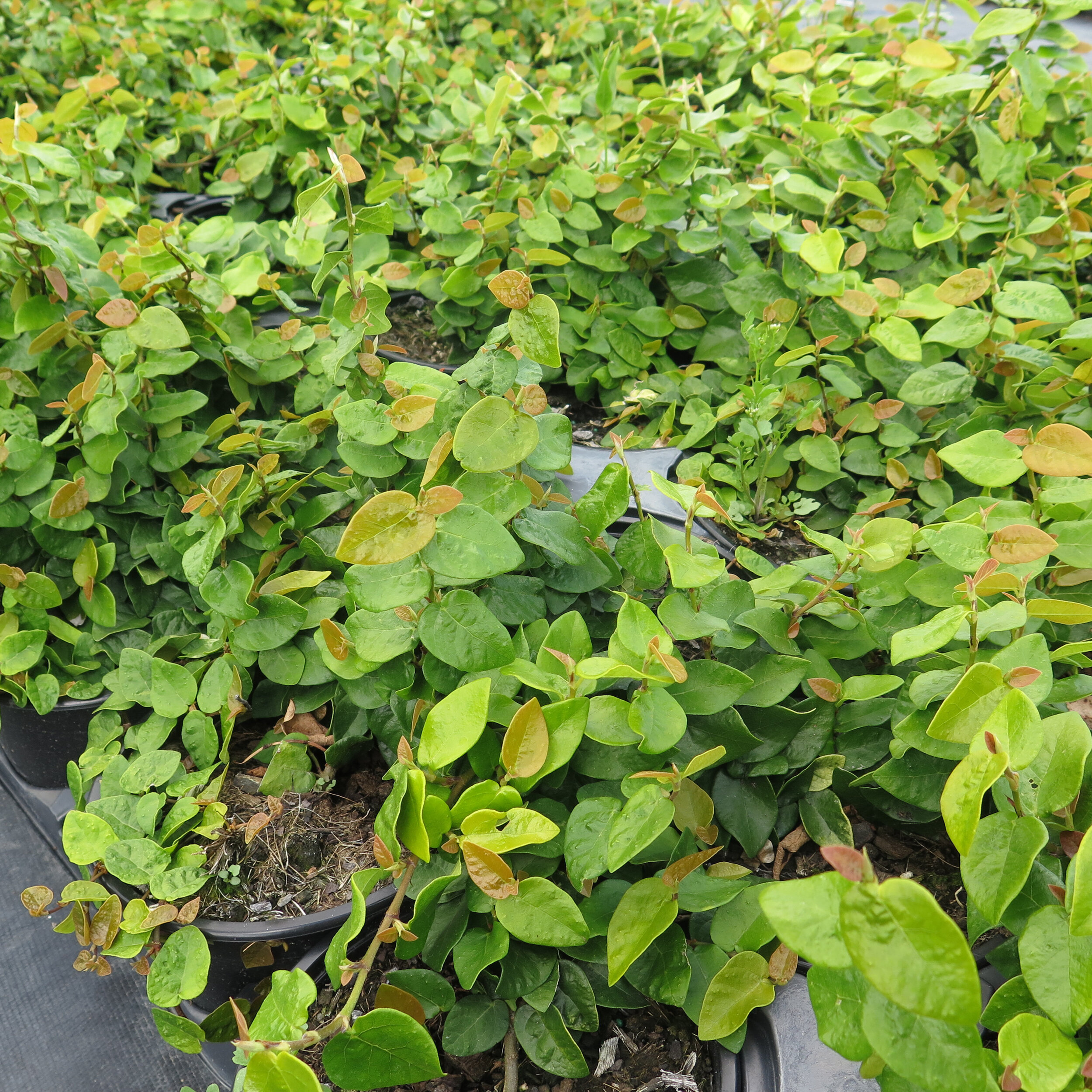Ficus pumila
Creeping fig
Ficus pumila, commonly known as the creeping fig or climbing fig, originated from East Asia. As the common name indicates, the plant has a creeping/vining habit and is often used in gardens and landscapes where it covers the ground and climbs up trees and walls. The plant has no maximum spread but only grows a few cm high, it has small heart shaped leaves that grow to approximatively 3cm in length along a wiry wooden like stem. It is an evergreen climber and prefers moderate to full sun.
Ficus pumila is a fast-growing plant and requires little in the way of care. It can become invasive and cover structures and landscape features if not maintained and its growth contained. Good news is you can prune these as much as you like, this is best done in spring. There are a number of varieties of this fast-growing species such as the miminma, variegata and others which have smaller variegated leaves than the all green pumila.
<
Habitat:
–––––––––--
Suits temperate conditions.
Suits coastal conditions.
Sunlight:
–––––––––--
Prefers semi shade.
Prefers full sun.
Application:
–––––––––--
Use in single specimen amenity plantings.
Use for wall covering.
Size:
–––––––––--
Mature: diameter 2m x height 0.2m
Planting centres: 0.5m
>
Creeping fig
Ficus pumila, commonly known as the creeping fig or climbing fig, originated from East Asia. As the common name indicates, the plant has a creeping/vining habit and is often used in gardens and landscapes where it covers the ground and climbs up trees and walls. The plant has no maximum spread but only grows a few cm high, it has small heart shaped leaves that grow to approximatively 3cm in length along a wiry wooden like stem. It is an evergreen climber and prefers moderate to full sun.
Ficus pumila is a fast-growing plant and requires little in the way of care. It can become invasive and cover structures and landscape features if not maintained and its growth contained. Good news is you can prune these as much as you like, this is best done in spring. There are a number of varieties of this fast-growing species such as the miminma, variegata and others which have smaller variegated leaves than the all green pumila.
<
Habitat:
–––––––––--
Suits temperate conditions.
Suits coastal conditions.
Sunlight:
–––––––––--
Prefers semi shade.
Prefers full sun.
Application:
–––––––––--
Use in single specimen amenity plantings.
Use for wall covering.
Size:
–––––––––--
Mature: diameter 2m x height 0.2m
Planting centres: 0.5m
>
Creeping fig
Ficus pumila, commonly known as the creeping fig or climbing fig, originated from East Asia. As the common name indicates, the plant has a creeping/vining habit and is often used in gardens and landscapes where it covers the ground and climbs up trees and walls. The plant has no maximum spread but only grows a few cm high, it has small heart shaped leaves that grow to approximatively 3cm in length along a wiry wooden like stem. It is an evergreen climber and prefers moderate to full sun.
Ficus pumila is a fast-growing plant and requires little in the way of care. It can become invasive and cover structures and landscape features if not maintained and its growth contained. Good news is you can prune these as much as you like, this is best done in spring. There are a number of varieties of this fast-growing species such as the miminma, variegata and others which have smaller variegated leaves than the all green pumila.
<
Habitat:
–––––––––--
Suits temperate conditions.
Suits coastal conditions.
Sunlight:
–––––––––--
Prefers semi shade.
Prefers full sun.
Application:
–––––––––--
Use in single specimen amenity plantings.
Use for wall covering.
Size:
–––––––––--
Mature: diameter 2m x height 0.2m
Planting centres: 0.5m
>


